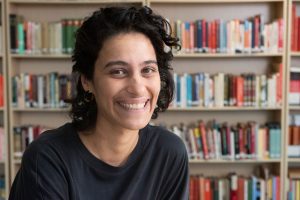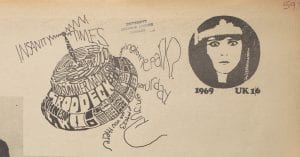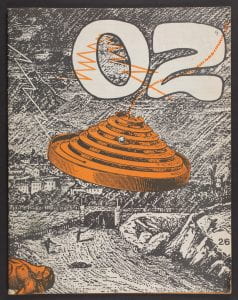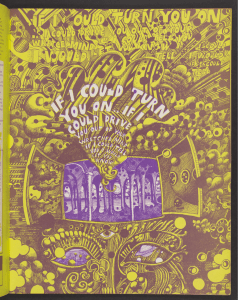Young people against racism in 1980s London schools
By Erika Delbecque, on 9 January 2023
This post was written by Dr Shirin Hirsch, who was one of the 2022 UCL RIC Visiting Fellows.
Bengali lives are at risk whilst they are at Morpeth – we are punched, kicked and spat on. Enough is enough.
On a Monday morning in January 1986 one hundred Bengali students walked out of their secondary school in Bethnal Green, Tower Hamlets. That weekend they had drawn up a poster calling on all children to strike with them until their demands were met. In Oxford House just off Bethnal Green Road they set up an anti-racist alternative school. Three days later, the students returned to Morpeth with the school management agreeing to their demands. The strike was partially won. Young people, in taking action on their own behalf, had forced a change in the school.
Just over a decade later, I attended the same school. Bengali students were now a large part of the student intake and the school had new management. There were brief institutional histories given on dark days when fascists had attempted to organise and build their ranks inside the school. Then a new head teacher was brought in and it was said that he had transformed the school, later knighted for his efforts. But nowhere in these official histories were the actions of the students themselves remembered. Years later, when I stumbled upon a news report covering the strike, I was full of questions. Why did the students walk out of their school? Was the action connected to other strikes? What impact did the strike have on the school? And why had the students been forgotten for so long? I wanted to dig into the history of my old school, from a year before I was born, to try and find out more about where I was from and how young people had transformed their environment.
There are many challenges in researching the resistance of young people. For one thing, their lives are often remembered in words, documents or collections owned by adults. What is seen as ‘significant’ by older people might be different to young people’s views and experiences. Protests by young people are often against powerful institutions or people who can make decisions about what is and isn’t recorded. This was certainly the case in the Morpeth school strike, with the school management inviting ILEA press officers to the school to ensure the story was tightly controlled. Thames TV entered the school on the day the students returned from their strike but they were only able to interview selected staff and not students. That does not mean young people’s actions have been entirely erased. The local press did report on the Morpeth strike and documents from the strike were kept by a member of ILEA, which have since been donated to Tower Hamlets Archive.

Rally against racism in schools. Papers of Ken Jones KJ/4/1, UCL Special Collections, IOE Library and Archives, London.
Morpeth was not the only school where young people were struggling against racism. For my UCL Special Collections fellowship here, I have been spending time with two collections: the Marina Foster (MF) and Ken Jones (KJ) papers. Marina Foster was a Black teacher who had left South Africa as a refugee in the 1960s and in London became an advisory teacher at the ILEA for many years, focusing on multi-ethnic education and tackling institutional racism. Ken Jones was from the 1970s until 1990 a teacher in London secondary schools and active in the politics of education and in issues of curriculum, pedagogy and trade unionism. Both collections illuminate the debates, policies and projects on multicultural and anti-racist education taking place in London schools. There are documents that show imaginative ways of creating an anti-racist classroom, with teacher organisations like Campaign against racism in education (CARE) All London Campaign Against Racism and Fascism (ALCARF) as well as documents from ILEA (Inner London Education Authority).
The collections also illuminate the serious racism that existed in London schools. Daneford school, nearby to Morpeth, in Tower Hamlets, was the most publicised example of this and there are a number of documents on this in UCL special collections. The Guardian reported in 1986 that three quarters of the students at Daneford were of Asian origin and there had been a spate of racist attacks inside the school. The school gates were plastered with National Front stickers and posters, and a 12 year old Bangladeshi student had been viscously attacked with a razor blade by four white students. Another time, twenty white young people at a football match ‘spilled over into the school’ shouting viscous racist abuse. One teacher, Norma Hundleby, told the press: ‘Boys were coming out of all the classrooms to join them. It was totally out of control.’ Kumar Murshid, Chairperson of Campaign against racism in schools (CARS) explained that only ‘the dedication of the anti-racist teachers and pupils who have organised themselves against these attacks’ had helped to ease the tensions at Daneford. The racism, alongside the resistance, would receive national attention following the arrest of Daneford teachers and a school student who were protesting outside the Tower Hamlets ILEA office over the refusal of ILEA to take serious action against racism at Daneford school.
The reports at both Daneford and Morpeth schools challenged a version of schooling which saw young people as passive objects, who should simply ‘do what they are told’. Sajid, 18 years old, summed up the feeling when he explained to the press in 1986:
If we can’t go to school peacefully and study in safety, then we have to fight back. We have as much right as any white kid to go to school.

Black Parents Special no 1 (1985). Papers of Marina Foster MF/8/39, UCL Special Collections, IOE Library and Archives, London.
The voices of young people are sometimes hard to hear within these collections, but that does not mean they are completely silenced. In the Marina Foster collection there is a ‘Black Youth Annual Penmanship Awards’ with records of Black children’s writings from 1981, with essays on ‘What is means to be Black and British’ and ‘Being without Employment in Britain today’. The winning essay questioned the very nature of the school system, the student directly asking ‘does it prepare me or help me tackle the blatant and insidious forms of racism that, I am afraid to say, I will invariably encounter?’ The frustration at the school system, as well as wider society, was powerfully expressed by many of these young Black authors.

Gus, John (1986). The Black Working Class Movement in Education and Schooling. Papers of Marina Foster MF/8/63, UCL Special Collections, IOE Library and Archives, London.
The resistance at Morpeth secondary school in 1986 emerged out of this context and was not an isolated act. The Miners’ Strike had ended in March the previous year, a bitter defeat not just for the miners but for the whole of the labour movement. The year following the strike the numbers of days lost to strike action in Britain was at its lowest since 1967. However, school student strikes were not included in these figures. In April 1985 there was a national school student strike in response to the government’s attempts to make the Youth Training Scheme compulsorily for 16-17 year olds and to take unemployment benefits away from any young people refusing to participate. Alongside these strikes, the British government were openly attacking ‘hard left education authorities and extremist teachers’, as Thatcher put it. Parents were also resisting, and the Black Parents Movement, born in the 1970s, had begun to win serious changes in the schools. In 1981 and 1985 uprisings involving young people against the police had taken place in inner cities across England. Meanwhile teachers in 1985-6 entered disputes over cuts to schools and pay agreements. Gus John, a key activist and founder of the Black Parents Movement, in a speech he gave to teachers in 1986 which was later published as a pamphlet (M/8/63), explained:
The struggles waged by the black community outside of school and in relation to what was going on inside the school, gave school students the confidence to exercise their own power within the school. The school became for them the site of struggle against racism and against the treatment they were subjected to because of their class.
That relationship between students, community groups, teachers and wider political shifts is what I am interested in further exploring. This fellowship has given me the resources and time to piece together archival material and to explore these topics. I now hope to speak to some of the participants themselves. I am gradually trying to recover the resistance of young people against racism so as to remember and learn from their struggles.
 Close
Close









 Politics and social policy, especially 19th and 20th century reform movements
Politics and social policy, especially 19th and 20th century reform movements